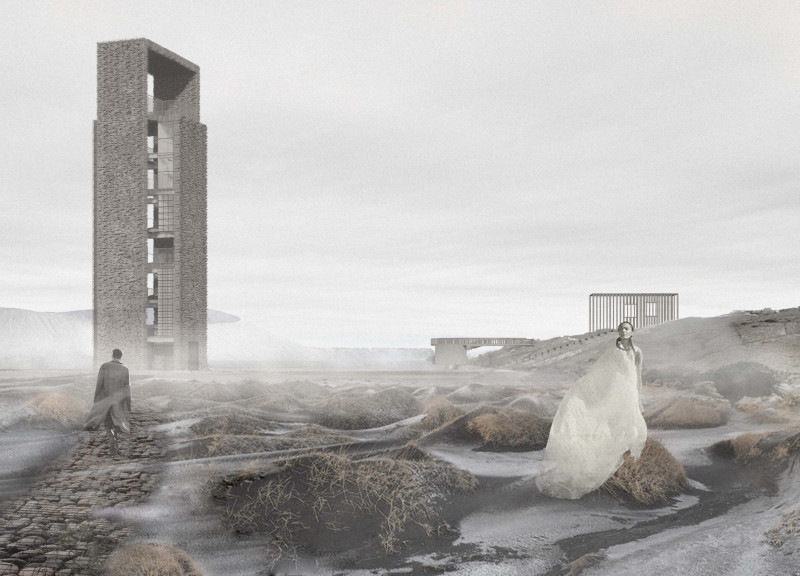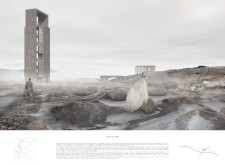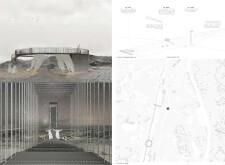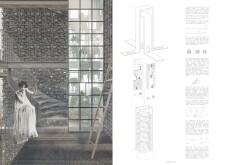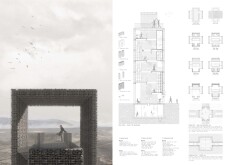5 key facts about this project
The Cave Tower is located along the division of the Eurasian and North American tectonic plates in Iceland, an area known for its fascinating geological features and hot springs. The design encourages visitors to connect with the surrounding landscape while highlighting the local geothermal resources found near the Grjótagjá caves. The concept emphasizes the duality of the tectonic plates, creating a space that invites exploration and interaction with nature.
Architectural Form and Spatial Organization
The Cave Tower uses intertwined surfaces to represent the duality of the tectonic plates, serving as both a landmark and a functional space for visitor engagement. The layout promotes vertical movement, guiding visitors through different levels. These levels are designed for interaction with various greenhouse plants and offer open views of the landscape. Starting at the main entrance, which features a narrow opening in the southeastern facade, visitors enter a vertical space that enhances the experience as they ascend to an observation platform.
Pathways and Connectivity
The design features a system of pathways that connect the tower to nearby caves and bathing areas. This careful layout encourages movement and exploration, allowing visitors to appreciate the unique geological context. The pathways guide foot traffic throughout the site, providing opportunities for reflection and interaction with the natural surroundings.
Sustainable Practices and Greenhouses
Six small greenhouses are part of the design, focusing on sustainability and local food production. These greenhouses accommodate plants at different growth stages and promote agricultural education. Visitors can observe plant growth and cultivation, reinforcing the link between architecture and ecology as they walk through these green spaces.
Materiality and Environmental Integration
Basaltic rock and metal wire mesh are the primary materials used in the project. The basaltic rock reflects the local landscape and helps blend the structure into its surroundings. Meanwhile, metal wire mesh supports the architectural form and allows natural light and views to fill the interior spaces. This choice of materials enhances the connection between the Cave Tower and its setting, creating a clear relationship between the built environment and nature.
The observation platform offers wide-ranging views of the tectonic rift, helping visitors understand the scale and beauty of the geological formations in the area. This vantage point illustrates the interaction between human design and the natural characteristics of Iceland’s landscape.


